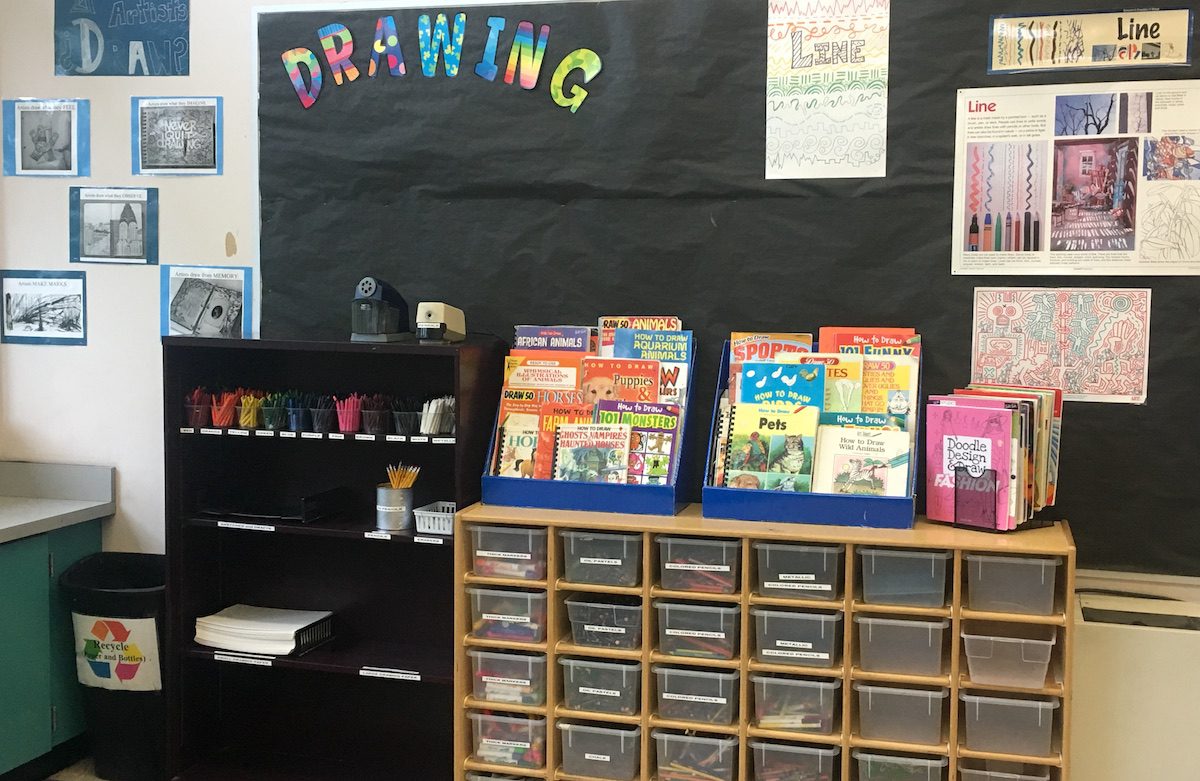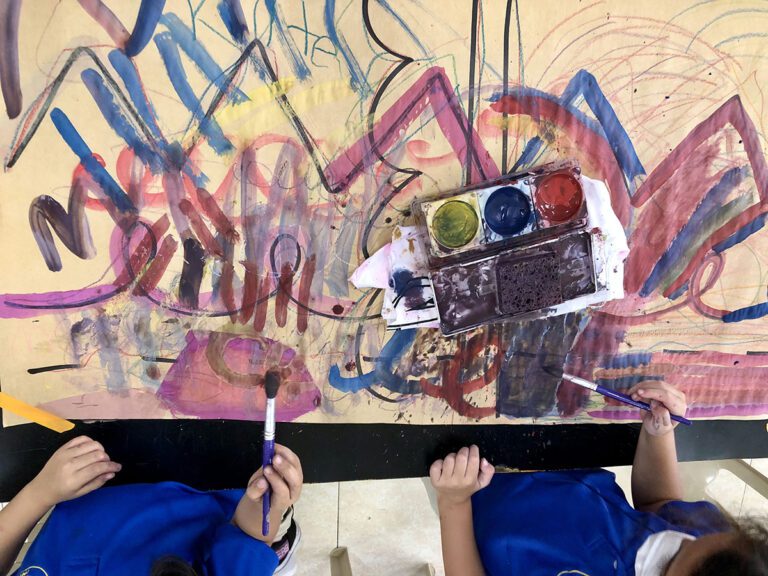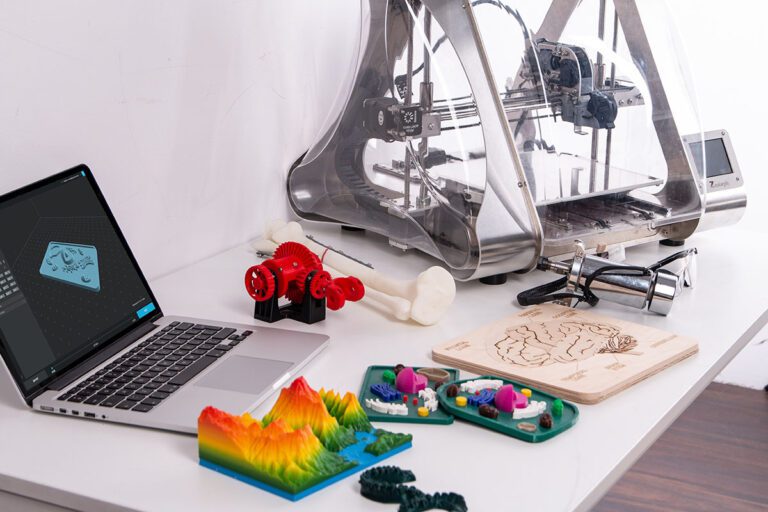Center-based learning has been growing in popularity in art education. From Teaching for Artistic Behavior to Makerspaces, the idea that classrooms can act as 3D lesson plans is one that benefits learners and teachers alike.
However, if you’re just starting out, it can be difficult to know exactly which centers you should provide to your students. You might feel overwhelmed with the decisions. Don’t worry. Today we’ll walk through five essential centers all choice-based rooms should have. Here are the essential spaces you’ll want to provide.
5 Essential Centers for Choice-Based Classrooms
1. Drawing
Drawing is a must-have center. It’s a vital art form, and it is also a great way for students to plan projects in other media types. This center is often the first center to open and the last to close in choice classrooms.
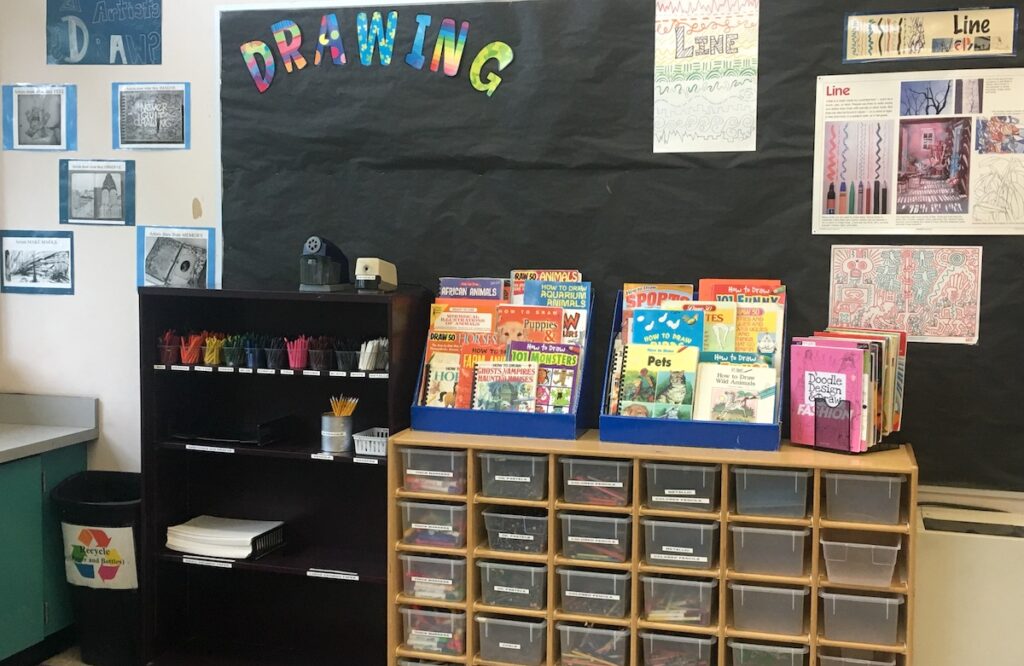
The drawing center should include:
- Drawing Paper
Provide a variety of sizes, textures, and quality. Make sure to limit higher quality papers to longer term projects. - Drawing Tools
Buy smaller amounts of high-quality materials and store them in easy-to-access containers. - Drawing books and reference materials
- Posters about artists, techniques, and styles
- Anchor charts that cover certain materials or techniques
- Technology for research
Once the drawing center is open and established, it’s easy to add new materials or host small groups for drawing bootcamps or new projects.
If you’re not sure how to get started, check out the article 5 Steps To Opening A TAB Drawing Center!
2. Collage
The collage center introduces students to assemblage art. It’s a great place to teach younger students about cutting, pasting, and overlapping. Ideas like juxtaposition, negative space and theme can be introduced with older artists.
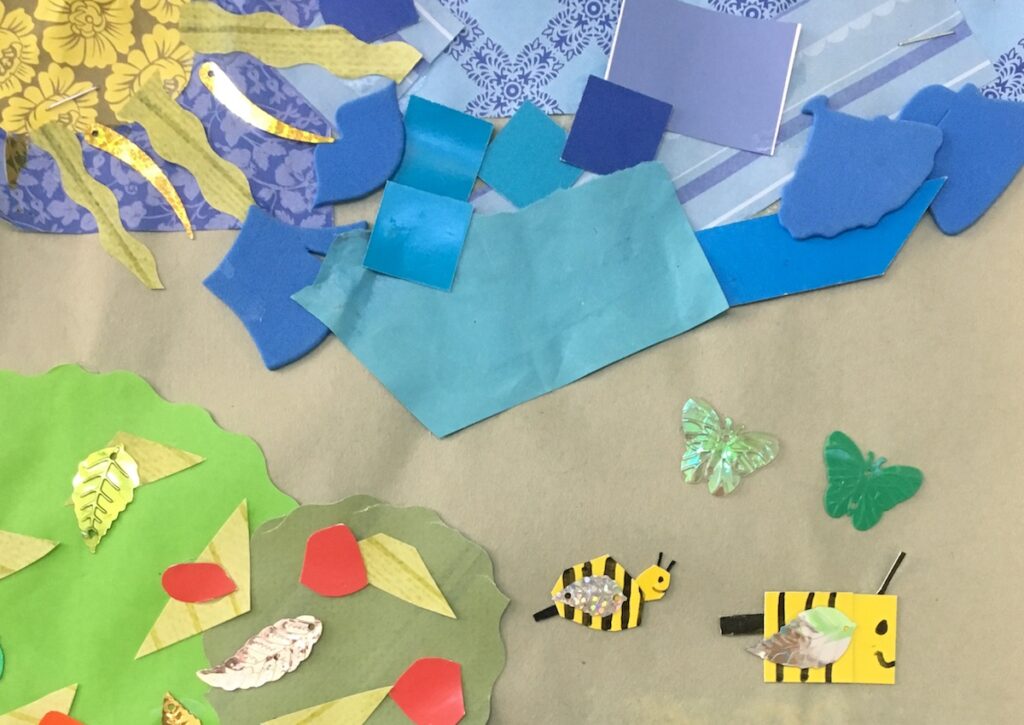
The collage center should include:
- Larger Base Papers
Be sure to specify these are not for cutting. - Smaller paper for cutting
- A variety of scissors and other paper cutting tools
- Adhesives like glue sticks, decoupage, and tape
- Embellishments
These can be things like needle and thread for sewing, sequins, stickers, book pages, magazines, etc. - Posters of famous artists
- Posters of collage styles and techniques
For a closer look at collage in a TAB classroom, check out 4 Steps To Opening A TAB Collage Center!
3. Painting
The painting center is one of the most difficult to set up and maintain but is by far one of the most popular. Students can create paintings, transform sculptures, or add to collages. Make sure your painting center is close to a water source for easy cleanup. Limit the number of tools, such as brushes or palettes, available, so students aren’t overwhelmed.
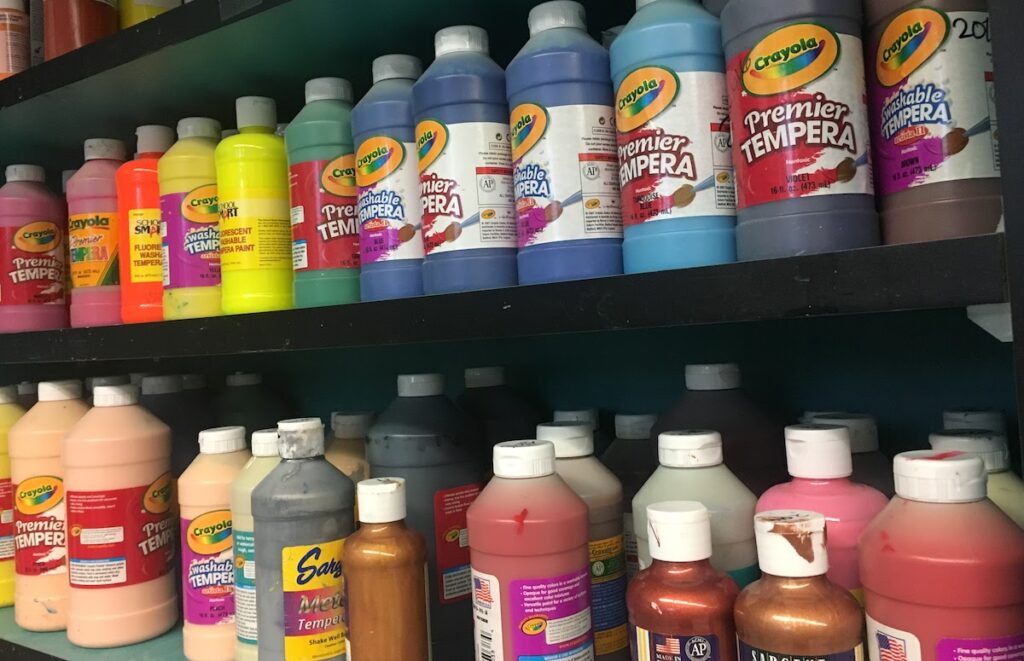
The painting center should include:
- Thick paper or canvases
- Watercolor, tempera, and/or acrylic and oil paints
- Brushes in a variety of sizes and styles
- A simple and easy-to-follow cleanup procedure
- Posters about artist, techniques, and styles
- Cardboard or palettes for mixing paints
- Smocks
- Access to water
If you’re interested in learning more, check out the article 5 Steps To Opening a TAB Painting Center.
4. Sculpture
Found object sculpture can be intimidating but is an extremely important media type for students. For those who fear 3D: breathe. Having a choice-based classroom means your students are the ones who will be dealing with the struggle (and the learning) of building in 3D. To get started, you’ll want to provide some simple materials and instruction, as well as posters to explain your center and how to use it properly.
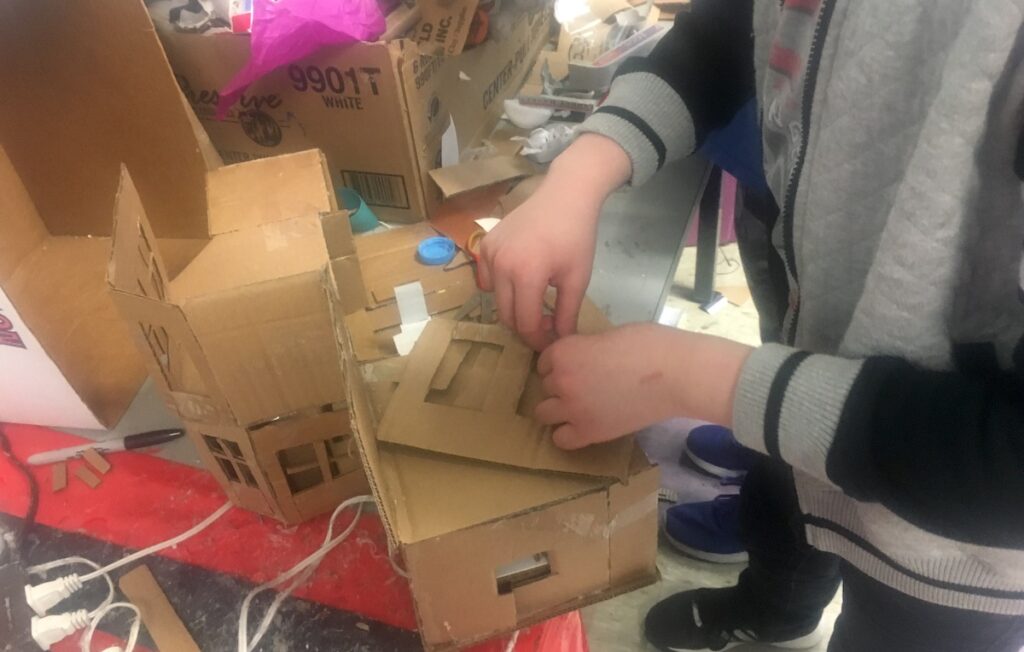
Make sure to provide students with requirements they must meet before they take their sculptures home. These might have to do with size limits, balance, strength, and transformation of the outside. Remember kid-made sculptures will be pretty weird, and that’s okay! Kid aesthetics are very different from adult aesthetics.
If you’re looking for a way to get started with found object sculpture, here are 12 Must Have Materials for Your Sculpture Center.
5. Ephemeral Centers
Ephemeral centers are choice-based centers that last anywhere from a few weeks to a few months. Centers like printmaking, clay, or fibers all make great ephemeral spaces. These spaces are also great for trying interesting experiments, learning about a special type of media, or presenting a theme or step-by-step project.
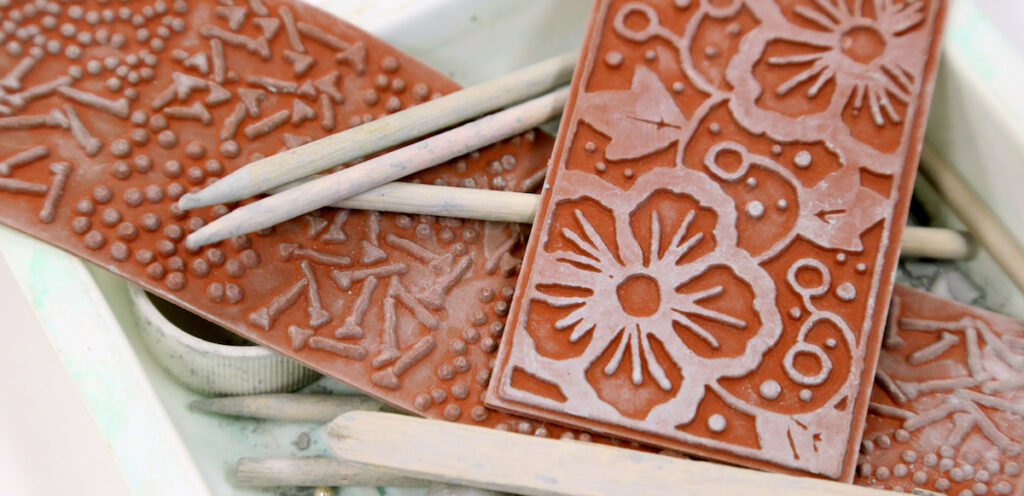
Make sure students know how long these centers will be open so they can plan ahead. If an ephemeral center is working well, it may be worth looking at opening it on a more permanent basis.
The choice classroom is always growing and changing. That’s what makes it exciting for you and your students. No two artists are alike, and no two choice or TAB classes run the same. Before diving into choice centers, take some time to check out these resources and see how other art teachers are offering choice!
- TeachingForArtisticBehavior.org
- Engaging Learners Through Artmaking by Katherine M. Douglas and Diane B. Jaquith
- The Learner-Directed Classroom by Diane B. Jaquith and Nan E Hathaway
- TAB resources on Pinterest
- Open Facebook groups such as Midwest TAB-Choice Art Teachers and Teaching for Artistic Behavior (TAB)
- This Yahoo Group
- The AOE Course Choice-Based Art Education
What essential centers do you offer in your choice-based space?
How does your centers-based space look?
Magazine articles and podcasts are opinions of professional education contributors and do not necessarily represent the position of the Art of Education University (AOEU) or its academic offerings. Contributors use terms in the way they are most often talked about in the scope of their educational experiences.
